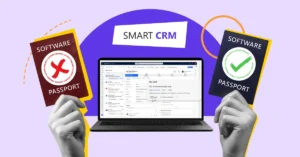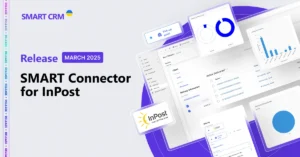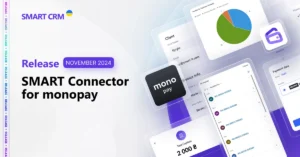LTV — Customer Lifetime Value: Calculation and Practical Applications

LTV is all about the ability to measure your brand’s existence. If no one comes back to buy your product again, you’ve either failed to deliver on the brand experience or people don’t value that experience.
At the heart of today’s business isn’t the product or the advertising — it’s the customers who keep coming back. These returning customers drive company growth and serve as a measure of success: each repeat purchase is not just revenue, but a confirmation of your brand’s value in the eyes of the buyer.
However, retaining customers is harder than attracting them the first time. The market is vast, competitors are aggressive, and customer expectations keep rising. In this environment, simply tracking sales or counting new leads is no longer enough. Companies need a clear answer to the question: “What real value does each customer bring over the course of our relationship, and is it worth investing resources to retain them?”
The answer comes from LTV (Lifetime Value), also known as CLV (Customer Lifetime Value) — one of the key indicators of long-term business success. It allows you to view customers not as one-off transactions but as sources of stable, recurring revenue. Let’s take a closer look at how to calculate LTV and what it can do for your business.
What is LTV (Lifetime Value)
LTV, or Customer Lifetime Value, is a metric that shows the total revenue a business earns from a single customer over the entire period of their relationship. It takes into account all purchases and interactions — from the first transaction to the last touchpoint — capturing the full value a customer brings while staying with your business.
How does it work? Imagine a coffee shop attracting a new customer through advertising. On the first day, they buy a coffee for 80 UAH. If they enjoy the drink, the atmosphere, and the service, they return tomorrow, next week, and perhaps even bring friends — becoming a regular visitor for three years, spending an average of 1,000 UAH per month. In this case, their LTV for the coffee shop would be roughly 36,000 UAH. This figure reflects the customer’s entire journey: initial acquisition, repeated purchases, and any additional spending generated by a positive experience.
It’s worth noting that alongside LTV, the abbreviation CLV (Customer Lifetime Value) is commonly used internationally. Both represent the same concept, but with slightly different calculation focuses. LTV typically shows the average profit a customer brings over their lifetime with the company, while CLV looks at each customer individually, enabling more detailed segmentation.
Why Customer Lifetime Value Matters for Your Business
Mass marketing is becoming increasingly less effective in today’s market, while acquiring new customers gets more expensive every year. In contrast, retaining existing customers costs 5–25 times less, according to Harvard Business Review research.
In this context, calculating customer lifetime value helps you identify which audience segments generate the highest profit and offer the greatest growth potential. This insight opens the door to personalized offers and communications, making customers feel understood and valued. The result is almost always increased loyalty, higher repeat purchase rates, and a boost in average order value.
Moreover, analyzing LTV allows businesses to spot weaknesses in the customer experience: where engagement drops, when customers “churn”, and what isn’t working in your strategy. This insight helps generate hypotheses for service improvements, test new approaches, and adapt your business model to meet the expectations of your most valuable leads. In this way, the company invests more in returning customers, creates a positive experience for those still deciding, and identifies potential churners before it’s too late.
Why Calculate LTV: 7 Reasons for Business Owners
The LTV metric answers one of the most critical business questions: “How much do I need to spend to earn more?” But the value of LTV goes far beyond a single number. Calculating customer lifetime value provides businesses with a range of strategic advantages:
- Customer segmentation — Understanding which customer groups generate the most profit allows you to focus resources where they matter most.
- Personalized offers — Creating relevant products, promotions, and communications for different segments gives customers the feeling that they are seen and understood.
- Marketing cost optimization — Clearly defining how much can be spent to acquire a customer while remaining profitable enables more effective financial planning.
- Identifying the most profitable channels — Analyzing which sources bring in the highest-LTV customers helps you prioritize these channels in your marketing efforts.
- Reducing conversion costs — Eliminating ineffective channels and strategies that don’t bring valuable customers ensures budget efficiency.
- Adapting strategy to high-value leads — Flexibly adjusting approaches based on which customers drive the most growth helps preserve resources.
- Revenue and ROI forecasting — Accurately calculating how much to invest in acquisition maximizes return on investment.
How to Calculate LTV: Formulas for Different Industries
There’s no one-size-fits-all formula for calculating customer lifetime value. The method you choose depends on your business model, industry, and company goals. For example, in retail, the focus is usually on average order value and purchase frequency, for subscription services — churn rate and average revenue per user, and in banking — margin and long-term retention.
So how do you pick the right method for your business? Below is a list of formulas commonly used across industries, with examples to help you determine which fits your company best.
-
Simple LTV Formula for Subscription Services and Recurring Payments
LTV = ARPU × Customer Lifetime
ARPU — Average Revenue Per User per month = (Revenue ÷ Active Customers)
Customer Lifespan — Duration of the customer relationship
Example: ARPU = $30/month, Customer Lifetime = 24 months
LTV = $30 × 24 = $720
-
Basic Multiplicative LTV Formula for eCommerce and Retail
LTV = AOV × Purchase Frequency × Customer Lifespan
AOV — Average Order Value (total revenue ÷ total number of purchases)
Purchase Frequency — How often a customer buys
Customer Lifespan — Duration of the customer relationship
Use case: eCommerce, retail, regularly purchased products.
Example: AOV = $80, customer buys 4 times per year, lifetime = 3 years
LTV = $80 × 4 × 3 = $960.
-
LTV Formula with Margin and Churn (for SaaS and Online Services)
LTV = (ARPU × Gross Margin) ÷ Churn Rate
ARPU — Average Revenue Per User per month = (Revenue ÷ Active Customers)
Gross Margin — Profit margin
Churn Rate — Customer attrition rate
Use case: Services with predictable payment streams.
Example: ARPU = $15/month, Gross Margin = 60% (0.60), Churn = 4% (0.04)
ARPU × Margin = $15 × 0.60 = $9.00
Divide by churn: $9.00 ÷ 0.04 = $225.00
LTV ≈ $225.
-
NPV Model (for B2B and High-Value Products)
LTV = Σ (Revenueₜ × Margin ÷ (1 + Discount Rate)ₜ) — CAC
Σ — Sum across periods (year, month, etc.)
Revenueₜ — Revenue in period t
Margin — Profit margin
CAC — Customer acquisition cost
Use case: Long-term contracts and infrequent purchases.
Example: Revenue: $200, $240, $300 over three years. Margin = 50% (0.5), Discount Rate = 10% (0.10), CAC = $100
Year 1 = (200 × 0.5) ÷ (1 + 0.10)¹ = 100 ÷ 1.10 = $90.91
Year 2 = (240 × 0.5) ÷ (1 + 0.10)² = 120 ÷ 1.21 = $99.17
Year 3 = (300 × 0.5) ÷ (1 + 0.10)³ = 150 ÷ 1.331 = $112.70
Sum of discounted contributions = $90.91 + $99.17 + $112.70 = $302.78
LTV = $302.78 − $100 = $202.78
-
Segmentation and Analytical Approaches (Applicable Across Industries)
LTV = Σ (Segment Revenue × Retention Probability × Margin)
Σ — Sum across periods (year, month, etc.)
Segment Revenue — Revenue from the customer segment
Retention Probability — Likelihood of retaining the segment
Margin — Profit margin
Use case: RFM analysis, cohort analysis, and multi-category businesses.
This approach helps account for the fact that different customer groups have varying levels of value and retention.
How to Use LTV in Marketing and Business: Practical Applications
Knowing your LTV helps companies make informed decisions: how much to invest in customer acquisition, which loyalty strategies work best, and where to identify profit growth opportunities. But how does it work in practice?
- Customer Segmentation
LTV is an ideal criterion for segmenting your audience, allowing you to categorize your customer base — from the most valuable to those generating minimal profit. This helps identify high-potential clients and deliver personalized experiences: VIP offers, tailored communication, special discounts, and more. - Forecasting and Planning
Revenue prediction is a core use of LTV. With thoughtful approaches like cohort analysis, channel segmentation, and geographic breakdowns, businesses can estimate where future profits will come from. - Personalized Offers
Analyzing lifetime value reveals which products or services your most valuable customers purchase. This insight enables targeted campaigns, product bundles, and upsell or cross-sell opportunities. - Retention and Loyalty
LTV directly correlates with brand reputation: customers who feel valued return more often and spend more. - Identifying Growth Opportunities in the Customer Experience
A declining LTV in a segment signals waning customer interest. Tracking changes in LTV allows businesses to quickly spot issues in service, communication channels, or product offerings and address them proactively. - Strategic Planning and Risk Management
Knowing LTV helps forecast long-term profitability, plan business scaling, and build realistic financial models. LTV also highlights dependency on a limited customer group. If most revenue comes from a narrow segment, it’s time to consider diversifying audiences and channels, reducing vulnerability to market shifts or changes in customer behavior. - Efficient Marketing Budgeting
LTV provides a clear answer to: “How much can I spend on acquiring a customer (CAC) while still making a profit?” If LTV exceeds CAC, marketing spend is justified. If not, it’s a signal to optimize campaigns or acquisition channels.
Understanding the LTV:CAC Ratio — What It Is and How to Calculate It
Businesses in the digital market face new challenges: over the past five years, the average Customer Acquisition Cost (CAC) for digital companies has increased by 50%, driven by tougher competition and rising advertising costs on platforms like Facebook and Google. Analyzing the LTV-to-CAC ratio shows how much revenue a customer generates compared to the cost of acquiring them. This insight helps companies decide which customer segments are worth investing in.
So, what should the LTV:CAC ratio look like (where LTV = Lifetime Value, CAC = acquisition cost)?
- Less than 1:1 — the business is losing money.
- 1:1–2:1 — break-even range; a risky balance.
- 3:1 — considered a “healthy standard”: acquisition costs translate into profit and scalable growth.
- 4:1–5:1 — indicates a profitable business, but growth may be conservative due to cautious marketing spending.
It’s important to note that LTV:CAC benchmarks vary by industry. The average 3:1 ratio is only a guideline, not a universal rule. For example:
- B2B SaaS: typical range 4:1 — optimal for model stability and customer retention.
- B2C SaaS (mass-market): ~2.5:1 due to lower LTV and broader audience.
- Adtech: 7:1
- Cybersecurity, Fintech, Edtech: ~5:1
- Design: ~6:1
- Business Services: 3:1
- Industrial & Pharmaceutical: 3–4:1
If customers are acquired exclusively through paid channels, the average ratio is ~2.5:1. - Biotech, Business Consulting, Construction: 4:1
- Financial Services: 4:1
- Real Estate: 4:1
Effectively managing the LTV:CAC ratio helps understand whether marketing spend is truly benefiting the business. If a customer’s lifetime value significantly exceeds the acquisition cost, the channel is worth scaling — it’s already profitable. That’s why the 3:1 ratio is considered the baseline: it signals that the business model is ready for growth with profit. A 5:1 ratio, meanwhile, indicates the company can make even more aggressive marketing investments without sacrificing efficiency.
This metric is also crucial for external evaluation. Investors directly consider LTV:CAC when valuing a business: a model with a 3:1 ratio is typically valued several times higher than one with only 2:1. Similarly, the ratio affects payback speed: with LTV:CAC around 5:1, marketing costs can be recouped in as little as four months, creating a strong resource for reinvestment and growth.
Key Reasons for Low LTV: Business “Mistakes” That Reduce Customer Lifetime Value
Low customer lifetime value is rarely accidental — it usually stems from specific gaps in strategy, service, or communication. Recognizing these mistakes helps businesses identify problem areas early and fix them before they become systemic losses. Here are the main “mistakes” that can lead to low LTV:
- Lack of systematic customer retention efforts
Focusing solely on acquiring new customers often leads to existing ones gradually “falling away.” Without loyalty programs, personalized offers, or post-purchase support, even satisfied customers may turn to competitors. - Poor customer experience
Slow responses to inquiries, complicated purchase processes, clunky interfaces, or unpredictable delivery delays all undermine trust. Customers remember not just the product, but the entire journey with the brand. - Ignoring personalization
Sending the same communications to all audience segments risks losing the sense of individualized attention. Personalized recommendations and content increase repeat purchases and average order value. - Undervaluing post-purchase support
Lack of follow-ups, service reminders, or tips on using the product reduces the likelihood of repeat engagement. Customers are more likely to forget about a brand if it doesn’t stay on their radar. - Limited assortment or pricing strategy
If customers have nothing new to “discover” in your brand — no new products, promotions, upsells, or cross-sells — LTV stagnates. Expanding your offering allows you to increase purchases per customer without additional acquisition costs.
Seven Ways to Increase Customer Lifetime Value

Improving LTV isn’t an abstract goal — it’s a measurable business outcome. It can be achieved by combining quality service, effective communication, and data-driven decisions. The better a brand understands its customers and responds to their needs, the longer and more profitable the relationship will be.
Here are several proven, universal practices that help extend and strengthen customer relationships:
- Personalize offers and launch loyalty programs
Segment your customer base and use data on past purchases to recommend relevant products and services. Points, bonuses, cashback, or perks for loyal customers motivate them to stay with the brand and buy more often. (For example, about 80% of U.S. consumers belong to loyalty programs — and this increases repeat purchases by around 60%.) - Reactivate passive customers
Reach out to customers who haven’t purchased in a while — through special offers, discounts, or personalized messages. With this approach, you can re-engage 20–30% of inactive customers before they are considered fully lost. - Deliver high-quality service
Fast support, clear information, and a willingness to resolve issues build trust and encourage long-term loyalty. Research shows that over 90% of customers are willing to make a repeat purchase if they’ve had a positive service experience. - Upsell and cross-sell
Offer customers upgraded or complementary products. This not only increases average order value but also enhances the overall product experience. Automated post-purchase offers (for example, right after checkout) can significantly raise customer return rates. - Keep the assortment fresh
Regularly introducing new products or modifications keeps customers interested and gives them more reasons to come back. This is especially critical in highly competitive industries, where variety directly impacts purchase frequency. - Provide educational content and demonstrate expertise
Guides, tutorials, video lessons, or webinars help customers get more value from your product. This strategy strengthens brand trust and encourages consistent use. - Use analytics to optimize interactions
Continuously track LTV and test new tools — from email campaigns to upsell offers. This helps identify which actions deliver the most impact and scale them for greater profitability.
BROCARD Case Study: How LTV Analysis in a CRM System Helped Boost Company Profits
The effective use of LTV analytics in building marketing strategies is clearly illustrated by the success story of BROCARD, the largest perfume and cosmetics retail chain in Ukraine. Since 2018, the company has been using Microsoft Dynamics 365 tools to create personalized customer communications.
One of the most impactful initiatives was the automation of birthday-related interactions. Previously, marketers manually compiled birthday lists and sent out generic monthly campaigns. Today, the company has moved to daily personalized communications. To achieve this, four tailored customer journeys were created, targeting different customer segments — from standard discounts to exclusive offers for VIP audiences. These offers are sent seven days before a customer’s birthday and remain valid for another week afterward.
This approach quickly became one of the company’s top three most effective marketing activities, thanks to its strong results.
Another step toward optimizing customer relationships was the full RFM segmentation of BROCARD’s customer base. By applying the Recency (last purchase date), Frequency (purchase frequency), and Monetary (average spend) criteria, BROCARD built a 5×5×5 RFM cube and then streamlined it into 11 key groups. This allowed for more precise targeting of different customer categories.
Special attention was given to “dormant” customers. To win them back, cascade scenarios were introduced:
- The first offer is sent 9 months after the last purchase, as this was identified as the optimal reminder period.
- The next offers are sent after 12, 15 months, and so on, with increasing benefits for the customer.
- Only after three years of inactivity does a customer finally move into the “churn” segment.
The implementation of this strategy delivered tangible results: the number of dormant customers decreased almost fivefold, potential churn decreased 3.8 times, and the churn segment itself shrank 1.5 times.
By leveraging the customer lifetime value (LTV) metric, BROCARD gained a clear understanding of which customers bring the greatest value and which engagement scenarios are most effective. Without LTV, marketers would have been working “blindly”, launching the same mass campaigns for everyone. Thanks to this metric, the company was able to:
- justify investments in personalization,
- optimize work with different customer segments,
- balance short-term promotions with long-term loyalty.
FAQ — Most Common Questions About LTV
We’ve put together answers to the most frequent questions entrepreneurs ask about LTV:
- What’s the difference between LTV and CLV?
In most cases, they are synonyms — Lifetime Value (LTV) and Customer Lifetime Value (CLV) both describe the total profit a business earns from a single customer over the entire period of cooperation. The only nuance is emphasis: LTV is sometimes used in a broader sense, including not only financial value but also referrals and brand influence. - How often should LTV be recalculated?
Ideally, every quarter or after significant changes in pricing, marketing, or customer behavior. In fast-moving industries, even monthly updates may be required. - Is LTV analysis relevant for all business models?
For nearly all. It is especially important in subscription services, e-commerce, mobile apps, SaaS, and B2B. For one-off purchases (e.g., real estate), LTV is less commonly applied. - Can LTV be calculated by customer segments?
Yes — and it’s actually recommended. Segment-level LTV helps identify which groups of customers are the most profitable and adjust marketing strategies for each group. - How does LTV relate to CAC, ROI, and ARPU?
CAC (Customer Acquisition Cost): measures how much it costs to acquire a customer. The LTV:CAC ratio shows the profitability of marketing investments.
ROI (Return on Investment): evaluates overall investment efficiency, and higher LTV directly drives ROI growth.
ARPU (Average Revenue Per User): average revenue per user, which is one of the components in the LTV formula. - Can LTV be integrated into a CRM?
Most modern CRM systems allow you to automatically calculate LTV based on purchase history and customer interactions, which simplifies segmentation and marketing planning. - What are the most common mistakes in calculating LTV?
1. Using only revenue without considering margin.
2. Ignoring customer retention costs.
3. Applying average values without segmentation.
4. Calculating based on incomplete or outdated data.
If you’d like to implement automation tools to improve your company’s customer relationships, submit a request — and SMART business experts will select the most relevant solutions for you.

















